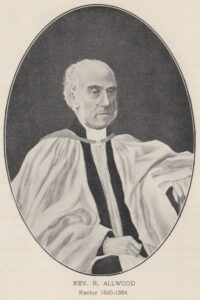Following the money generated from slavery, transferred and transmuted into UK spending, is usually difficult. Yet sometimes unmistakable glimpses appear. When they do, where the money goes can sometimes be surprising.
Almost 80 years ago, Eric Williams’s claim that wealth from slavery helped fund Britain’s industrial revolution was considered controversial. Today it is widely accepted, and now the debate is more about estimating how significant was the extent. Slavery wealth is also known to have stimulated the development of banking and insurance. There were many diverse outcomes from the wealth generated out of the forced labour of enslaved peoples in the British West Indies.
We can follow the path from enslavement and sale in Africa, across the horrors of the Middle Passage and into plantation life on Jamaica and other Caribbean islands, where long hours, whippings, rapes, and barbaric cruelties were everyday happenings. The brutal system, however, delivered profits for a small elite, many of whom lived as absentees back in the UK.
For one unexpected transformation of the profits derived from the enforced exertions of enslaved Africans, consider the following report from The Devizes and Wiltshire Gazette of 7 March 1839.
A meeting was held at the Guildhall Bristol on 21st February 1839, chaired by the Lord Bishop of Gloucester and Bristol. The meeting resolved:
- ‘to extend and improve popular education throughout the Diocese, on sound Christian principles, in connection with the Church of England’, and
- to form ‘a Diocesan Board, for promoting an improved and extended system of Education on the Principles of the Established Church, …in the Archdeaconry of Bristol, under the sanction of the Lord Bishop, and in connection with the National Society’.

Among the many named subscribers was Rev Robert Allwood, curate of Dowry Square chapel, Clifton, and in 1834-35 chaplain to the mayor of Bristol. His address in 1835 was York Place, Clifton, Bristol. Rev Allwood donated £5 and promised an annual subscription of £2 2s, and he was one of two Provisional Secretaries. Upon the suggestion of the Lord Bishop, the thanks of the meeting were given to the Rev. R. Allwood and Mr W. L. Clarke, for their valuable and able exertions in aid of the objects of this association.
The Legacies of British Slavery database shows that Rev Robert Allwood of Clifton was born in Kingston Jamaica in 1803. He was the son of Robert Allwood of Harding Hall, judge of the Supreme Court in Jamaica, who had ‘owned’ many enslaved people in Jamaica.
From 1815 to 1826 Allwood Senior owned Old Shafston Pen, for example, with 98 enslaved people in 1817. These included the African-born Maria aged 36 and her three daughters Peggy (19), Jinny (16) and Sally (9), all born in Jamaica. So, Maria’s enslavement had lasted since the 1790s and she had been made pregnant at age 16. The father of Sally, the daughter of African Hope (40), twenty years ago, had been white. Twenty-year-old May would have been younger than ten when she was uprooted from Africa. The lives of all these and others were directed towards profit-making for Robert Allwood.
The Will of the Honourable Robert Allwood of the Island of Jamaica was made in 1838. It says he had earlier provided £2000 for his son Robert and instructed the payment of this amount if not already paid. He also left his son a fifth share in his residuary estate.
Thus, we can trace the line by joining the dots from the horrors of slavery into the pockets of Rev Robert Allwood and onwards into the formation of Bristol’s Diocesan Board for promoting education. We should also consider how money from slavery financed Allwood’s education at Eton and Cambridge, and his leisure, so that he afforded time and scholarly abilities for his ‘valuable exertions’ on behalf of this project.
Rev Robert Allwood went on to have an illustrious career in Australia. Even this, however, might be seen as initially financed from his family’s slavery wealth.
The Devizes and Wiltshire Gazette article includes a long list of Noblemen, Gentry, Clergy and others who were present or involved – including some recognisable names with links to slavery.
Slavery-devised wealth helped finance not only industrial projects, but also many institutions and aspects of cultural life. Ironically, although enslaved women like Maria and Hope would have welcomed education for their daughters, most enslavers were determined to prevent their ‘slaves’ from ever being able to read or write.
Sources: Devizes and Wiltshire Gazette – Thursday 07 March 1839, page 2, column 4;
https://www.britishnewspaperarchive.co.uk/viewer/bl/0000360/18390307/025/0002
(requires subscription)
Australian Dictionary of Biography;
https://adb.anu.edu.au/biography/allwood-robert-1701
Legacies of British Slavery Database.
‘Slave’ Registers on Ancestry (requires subscription)




